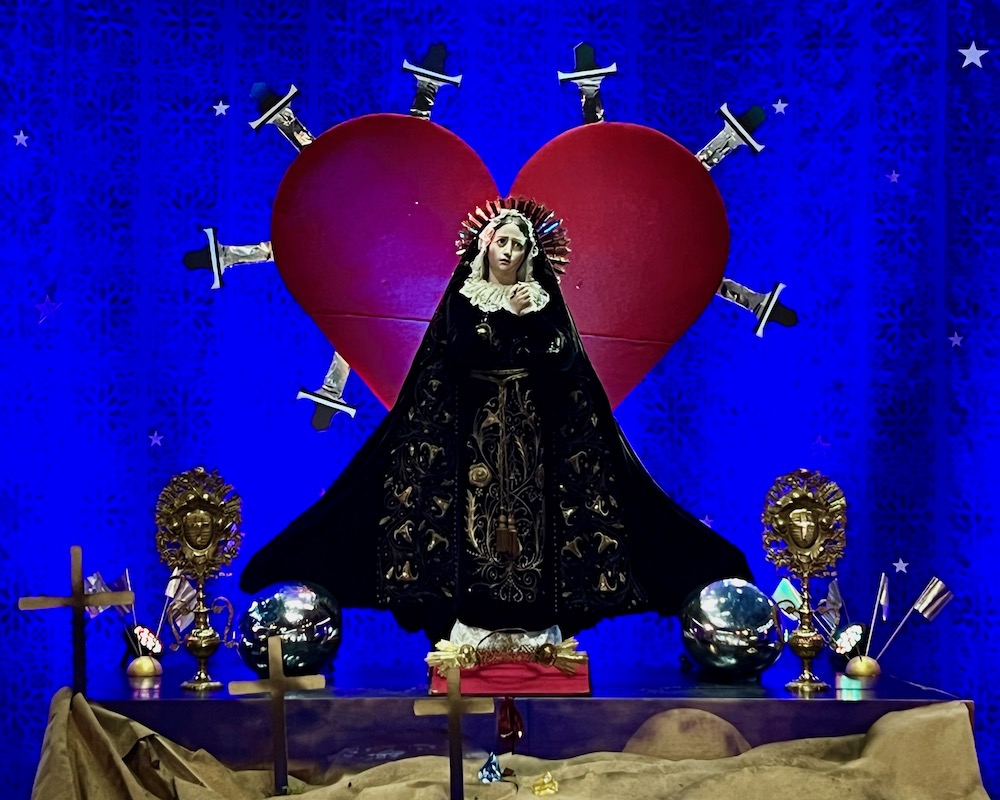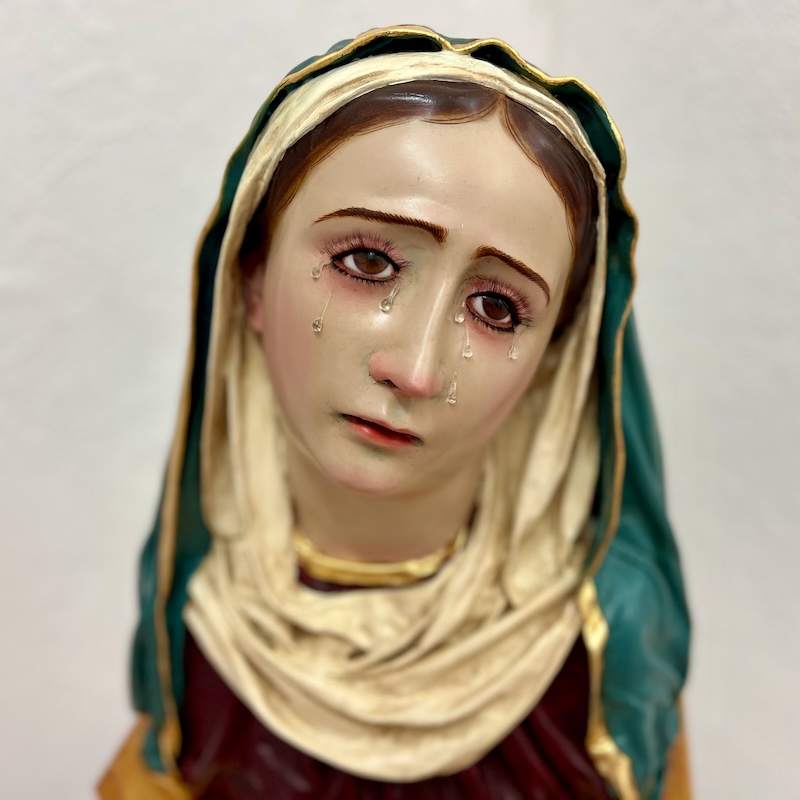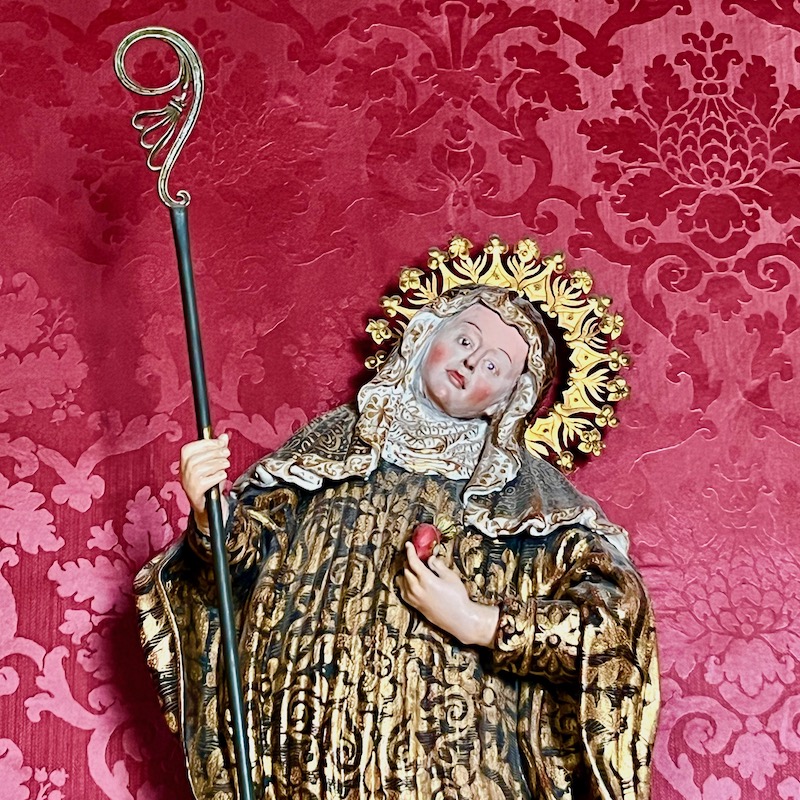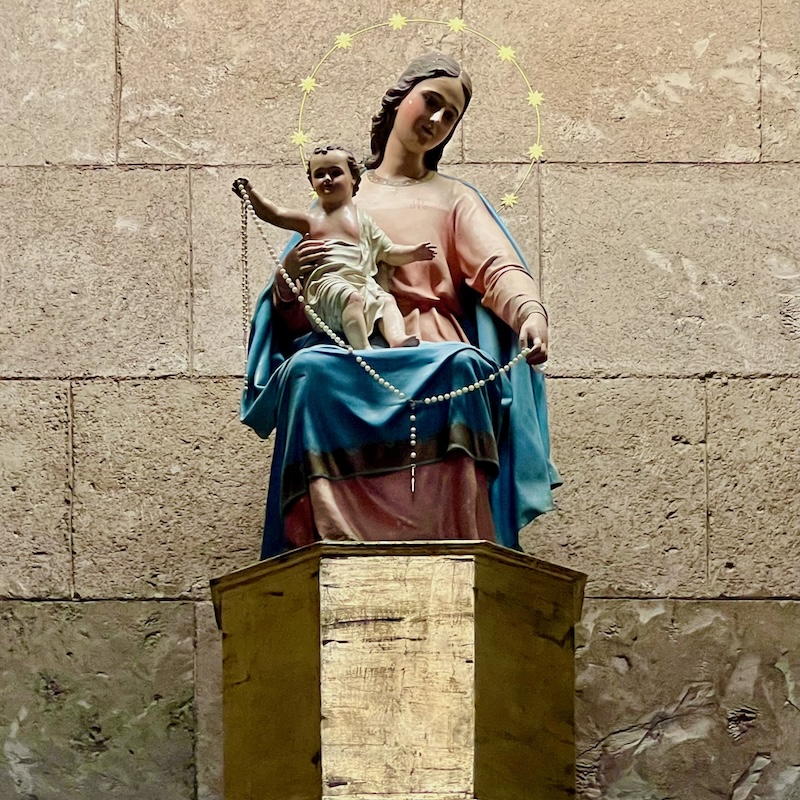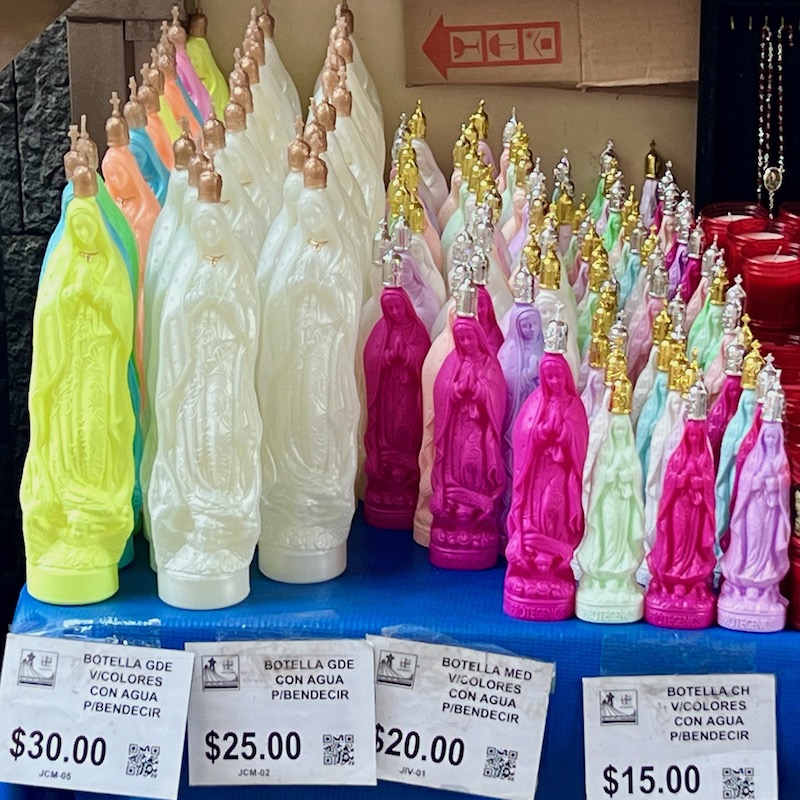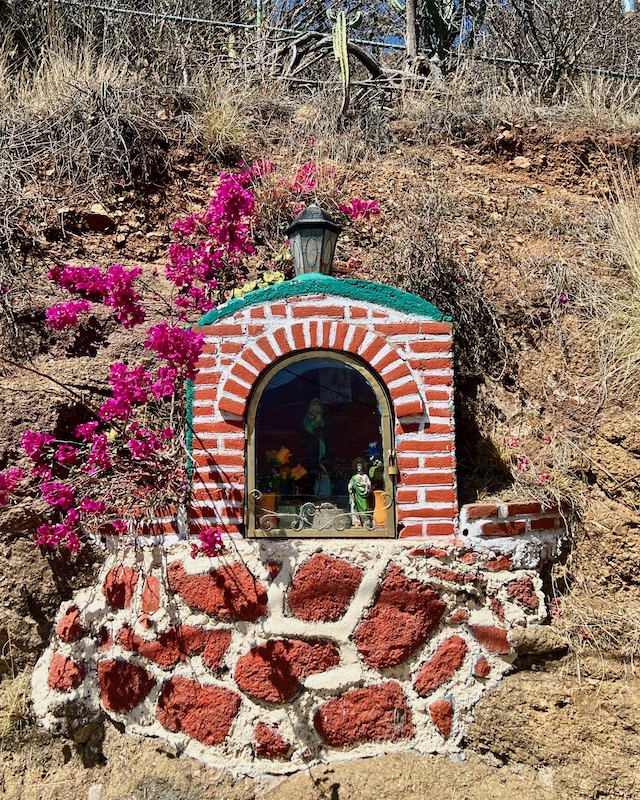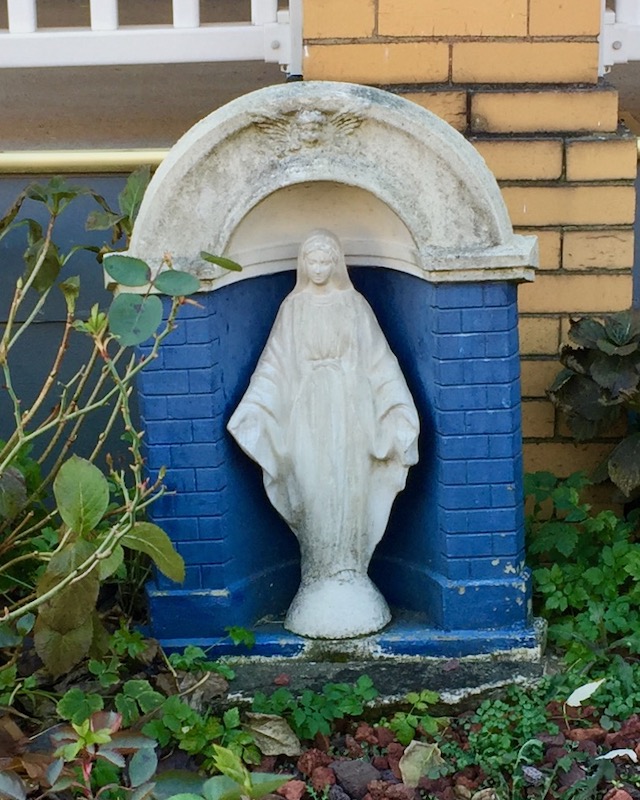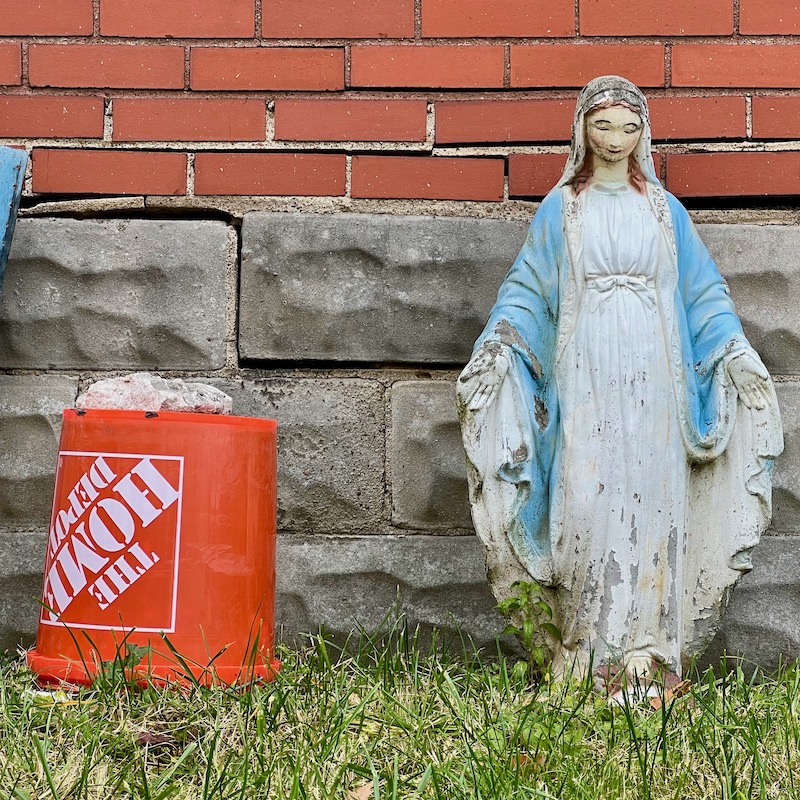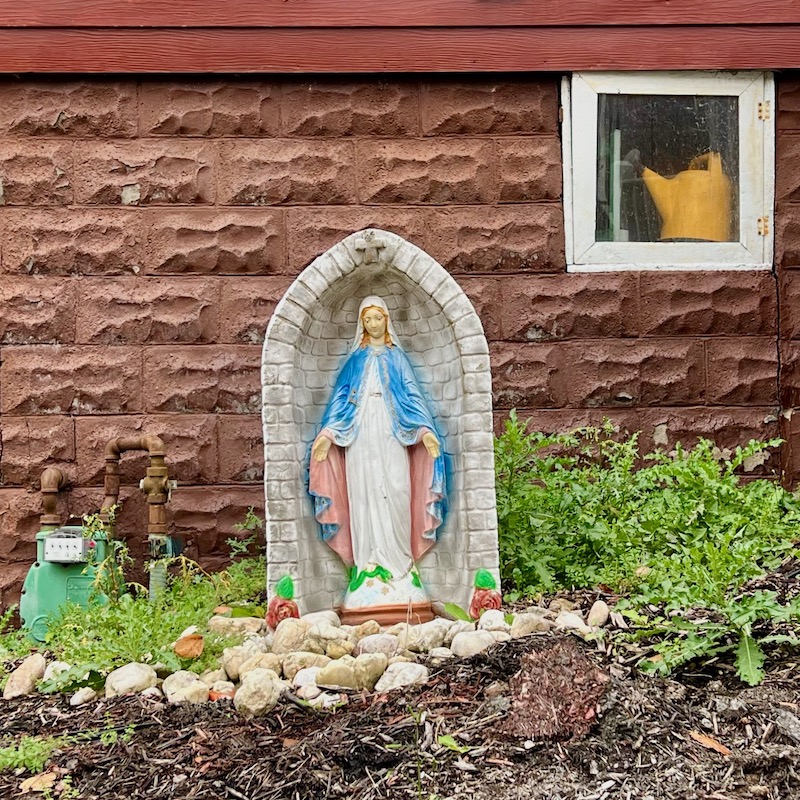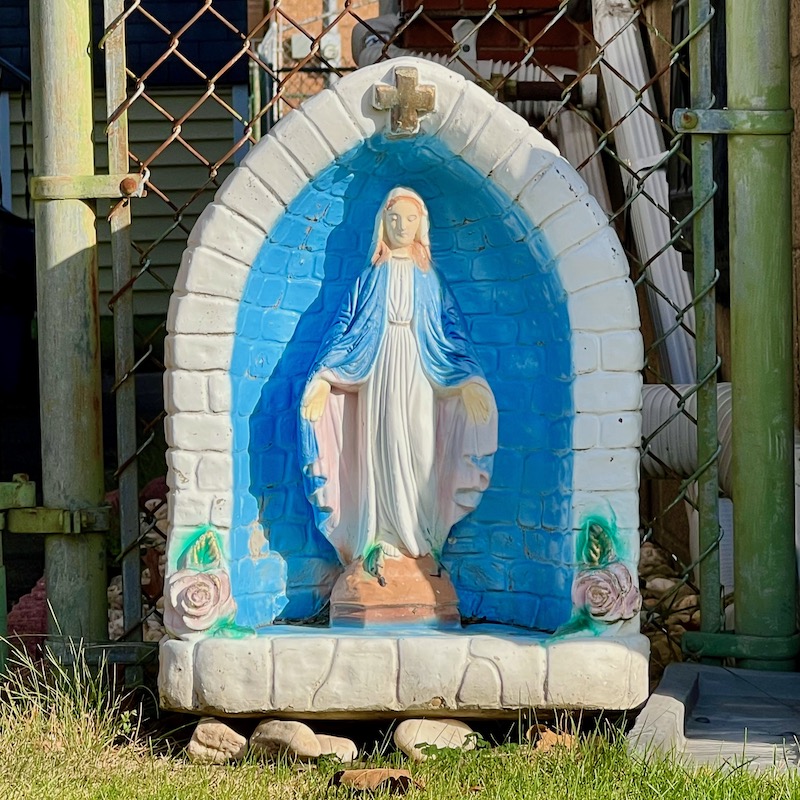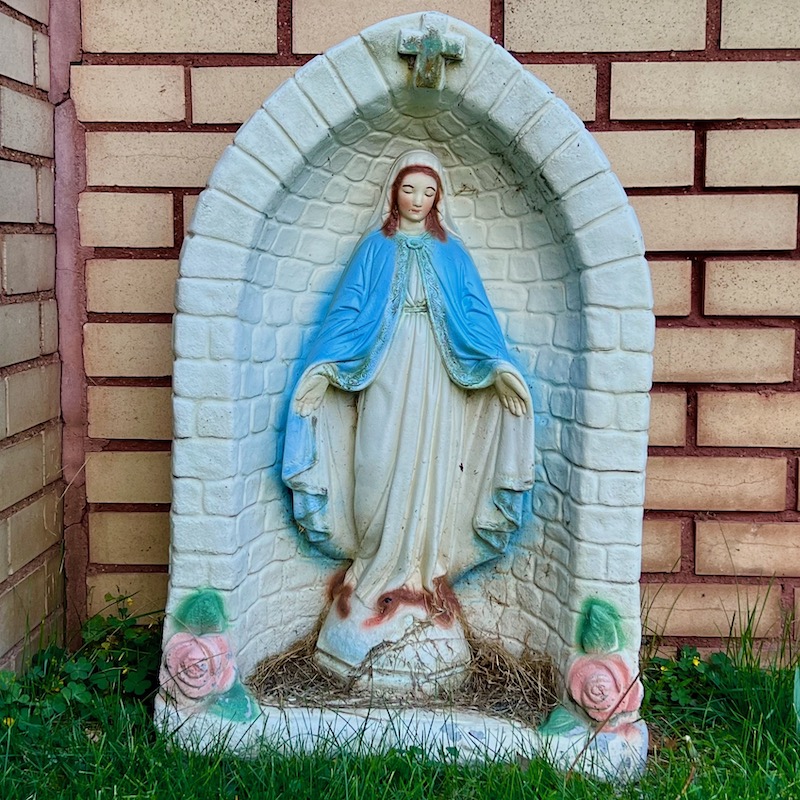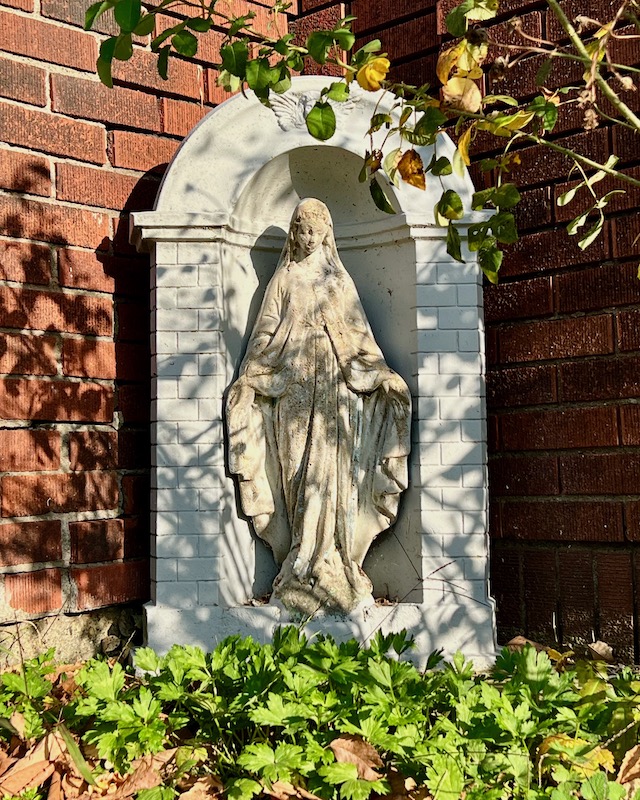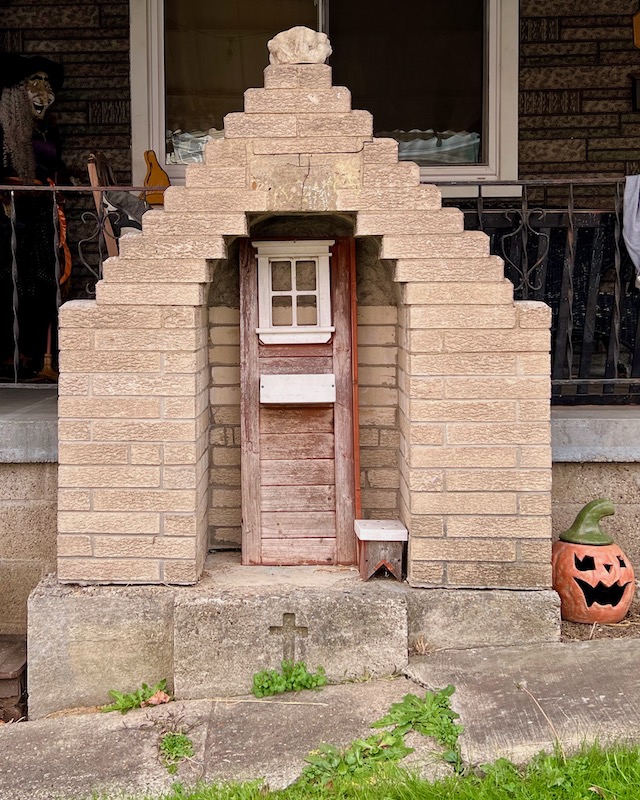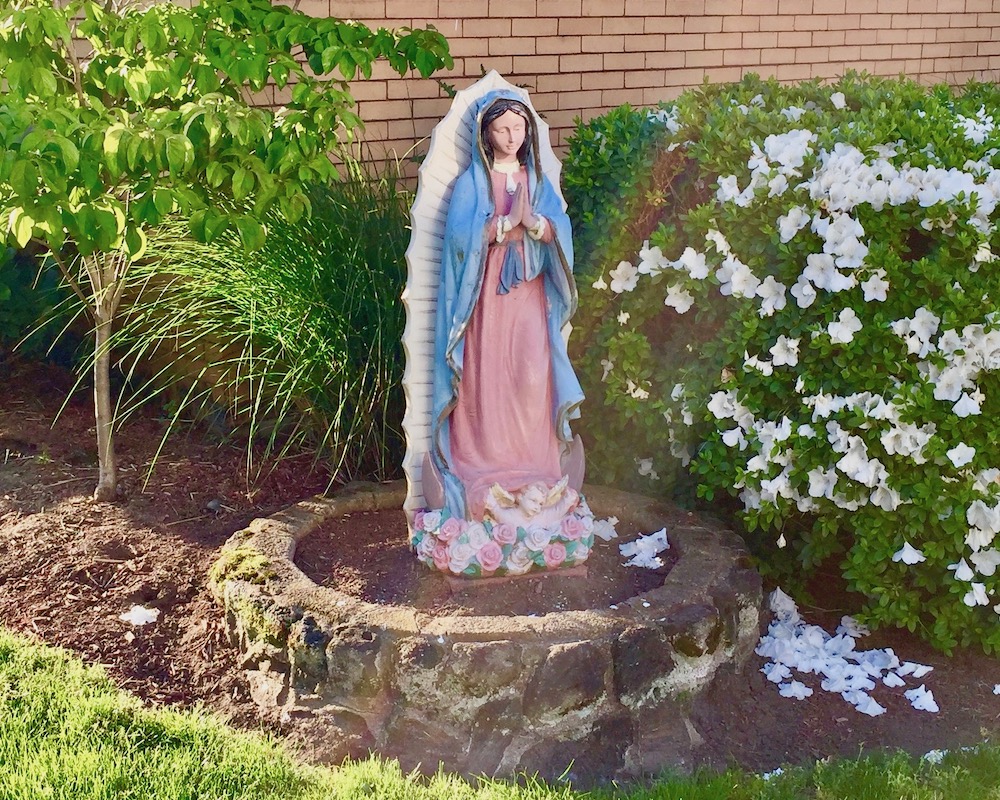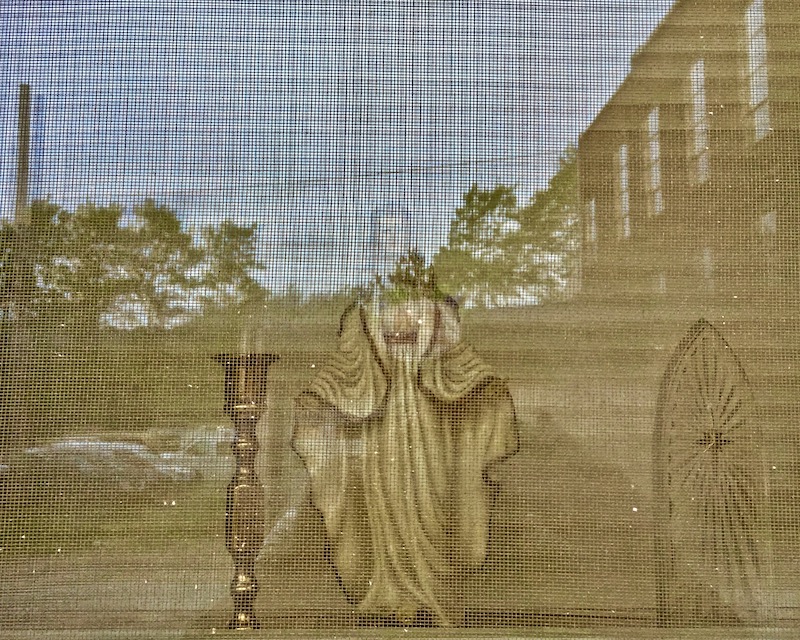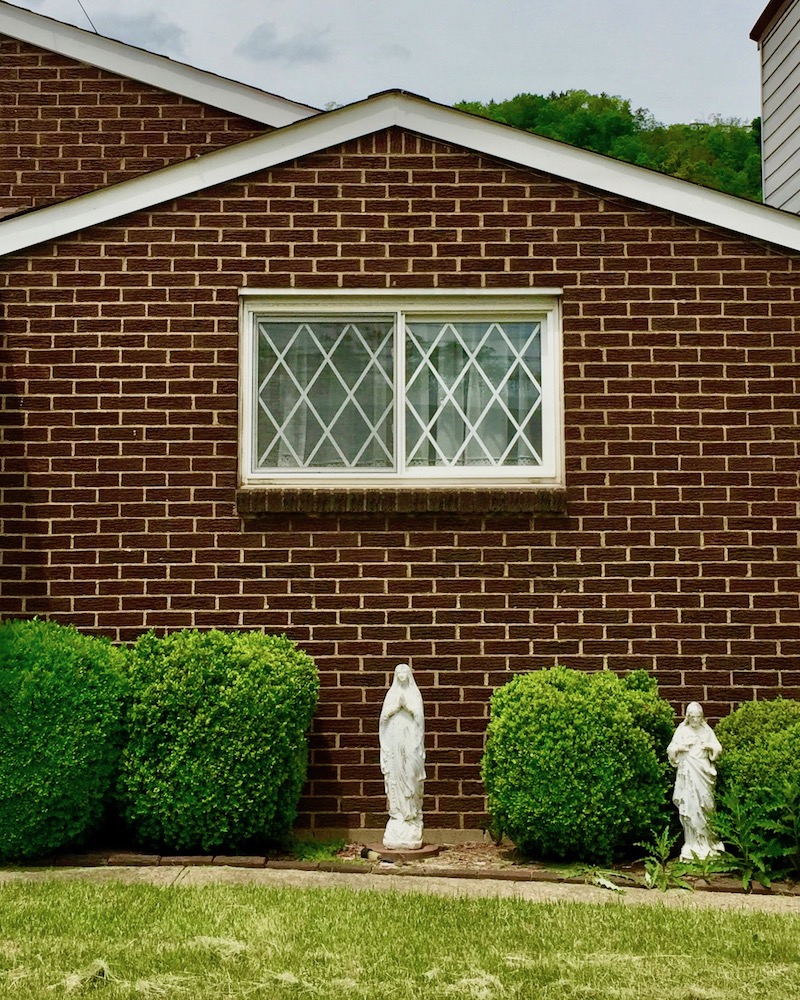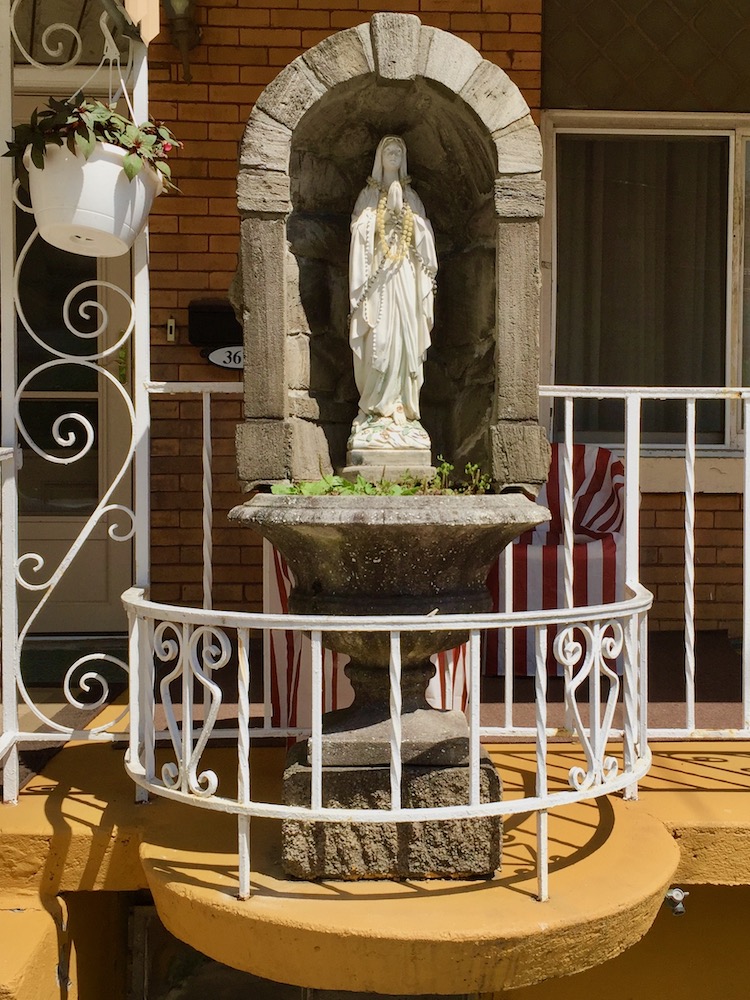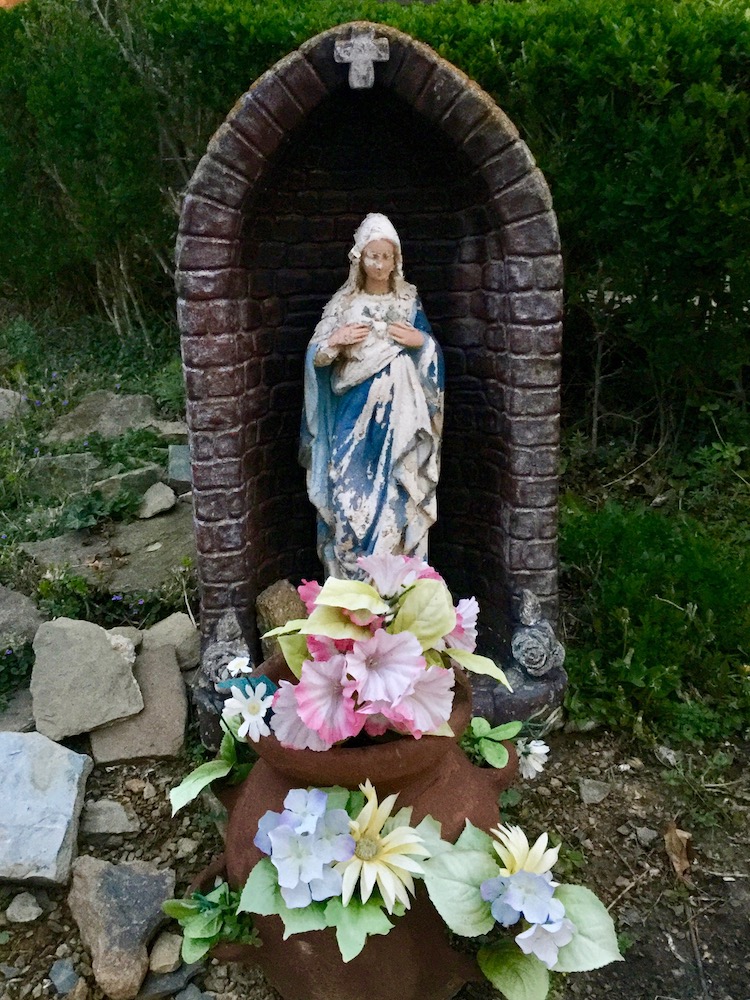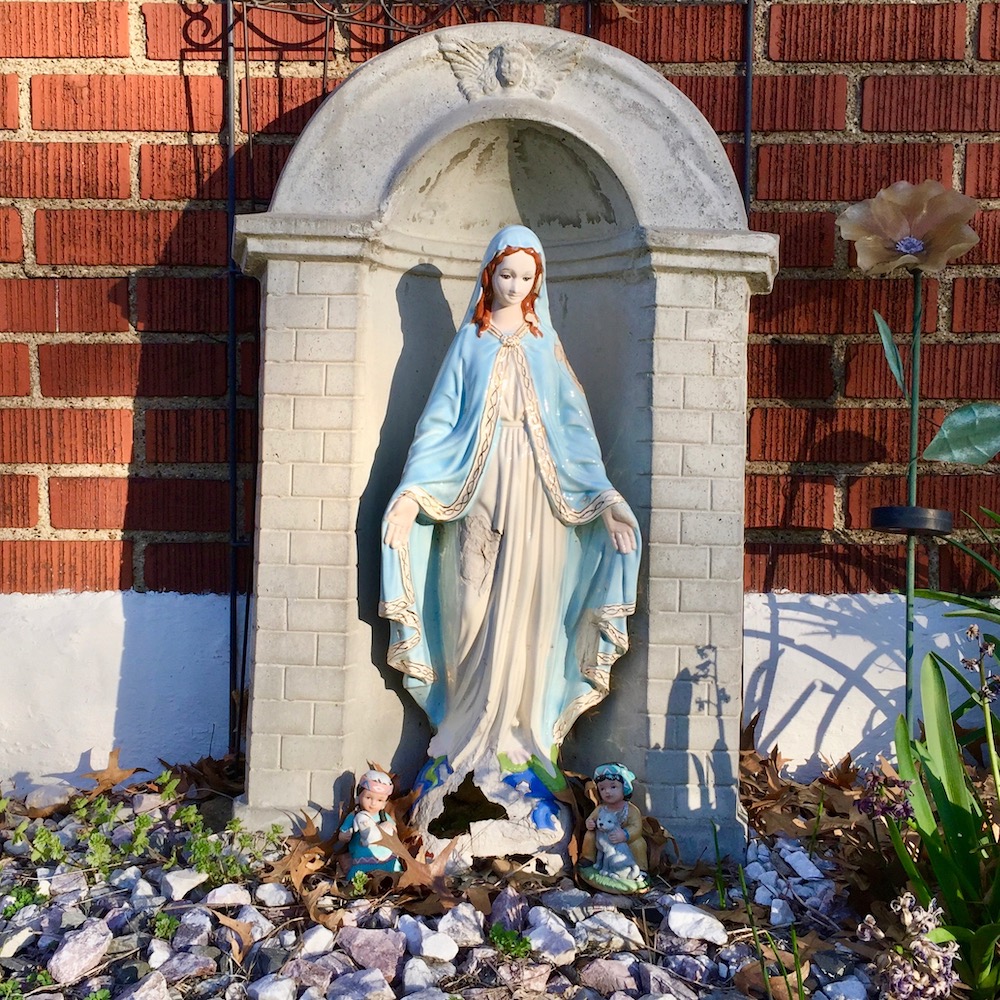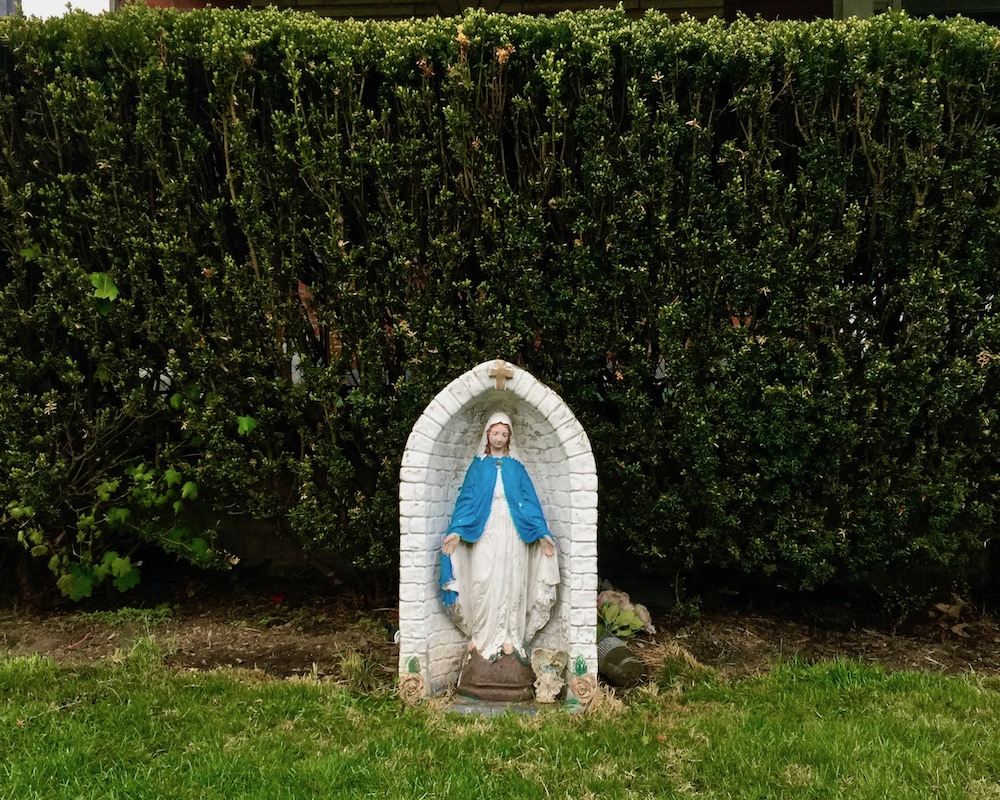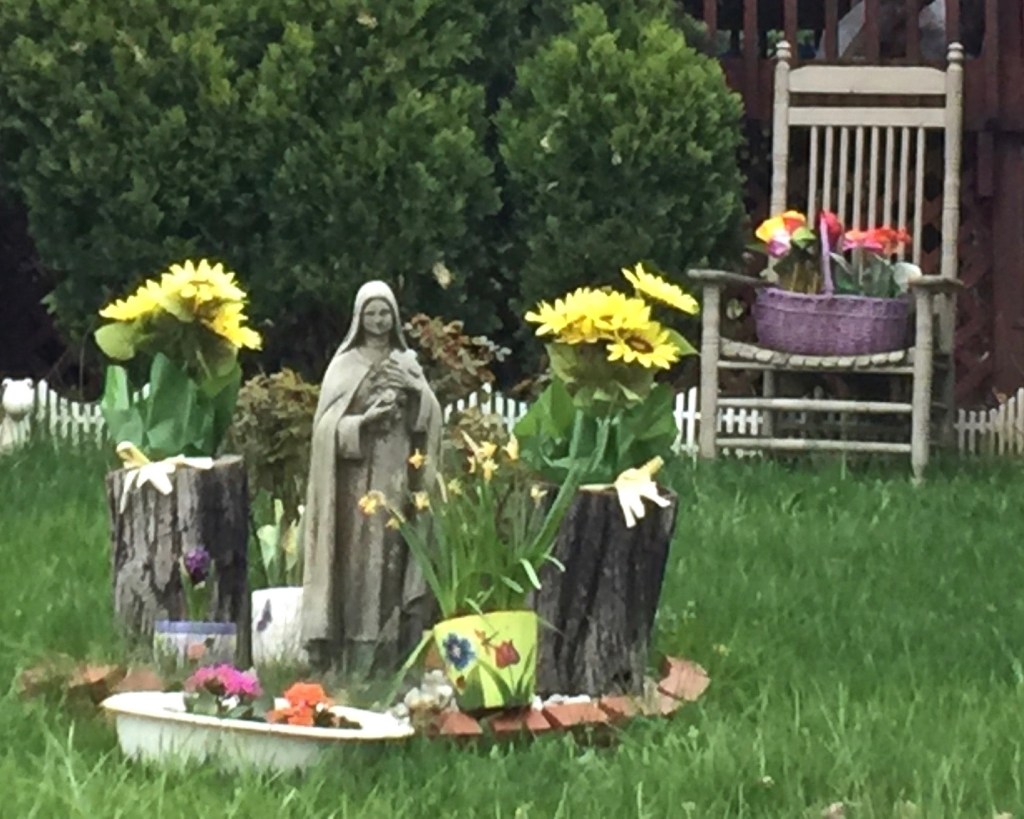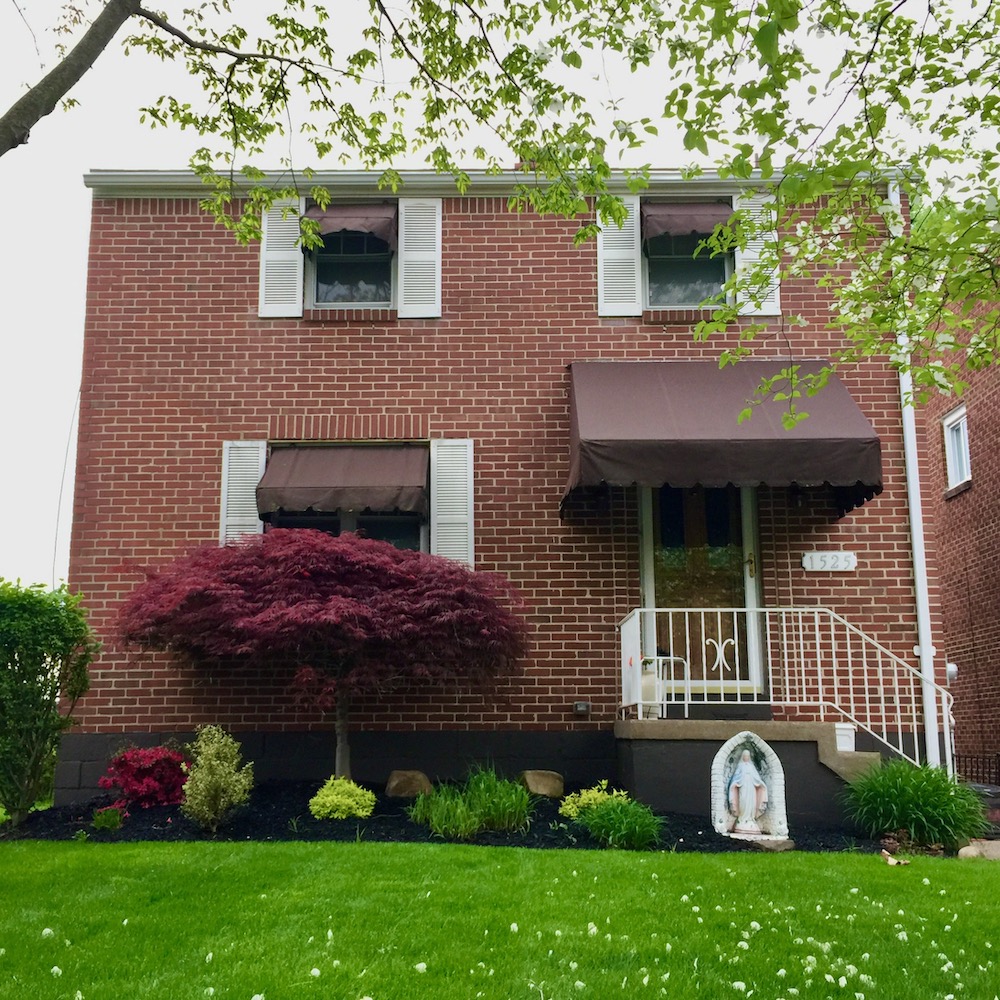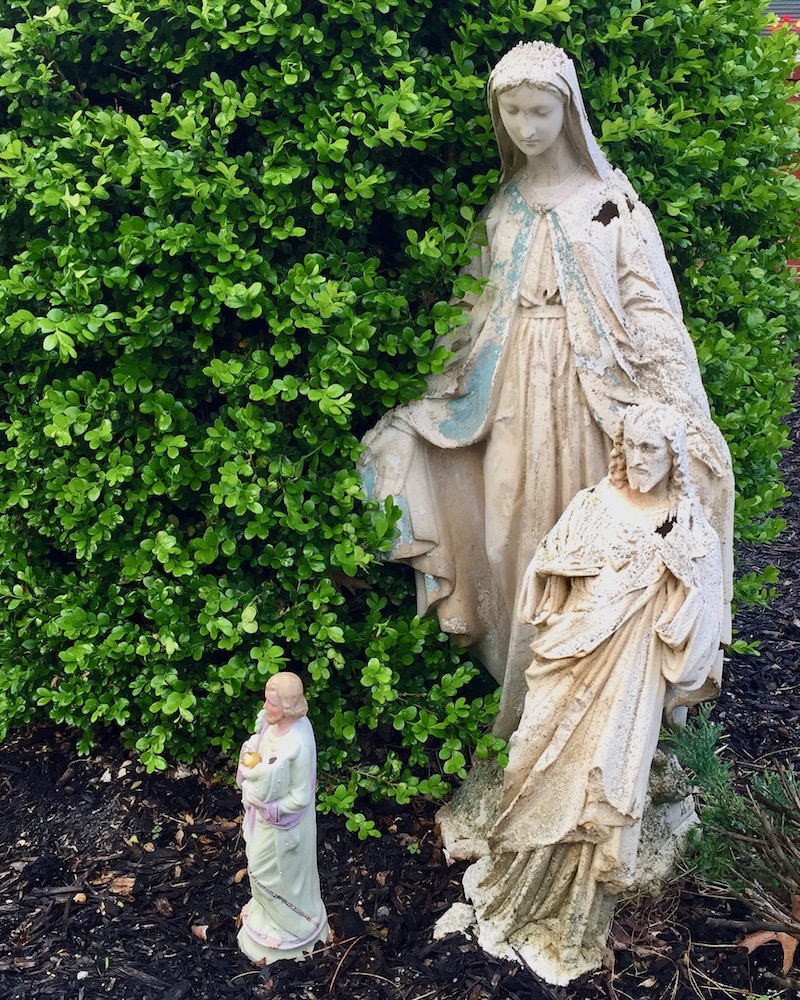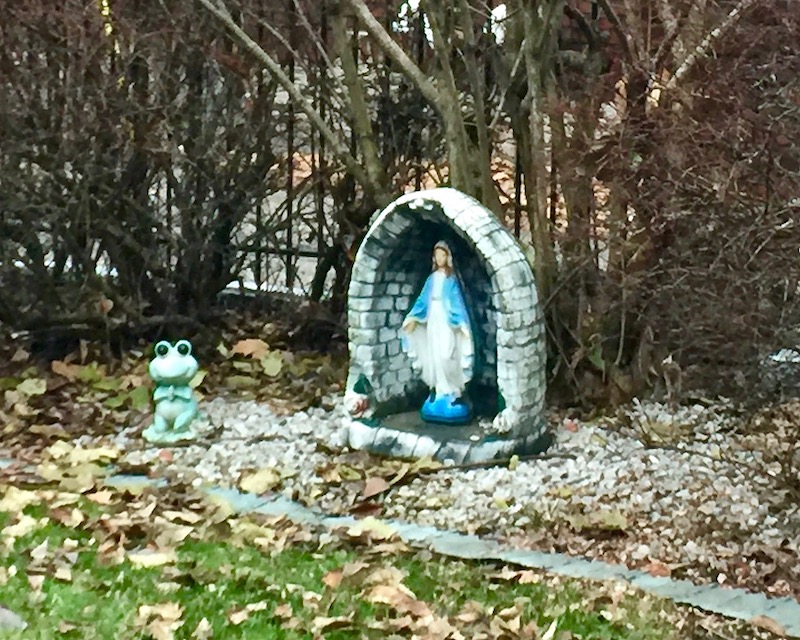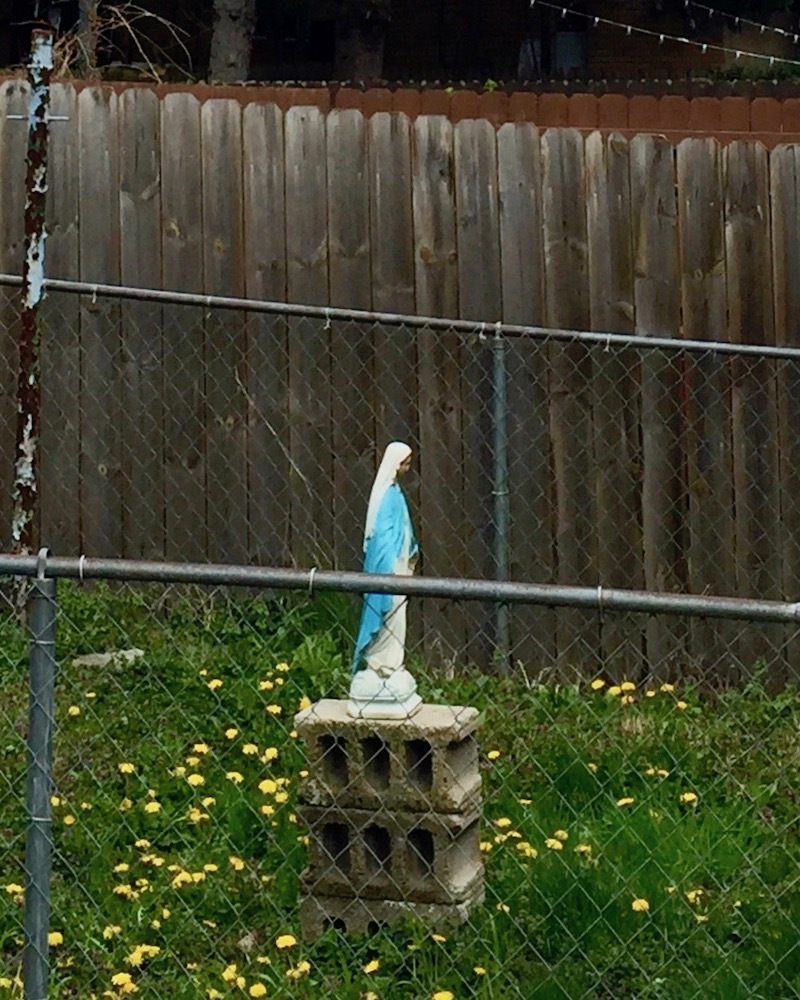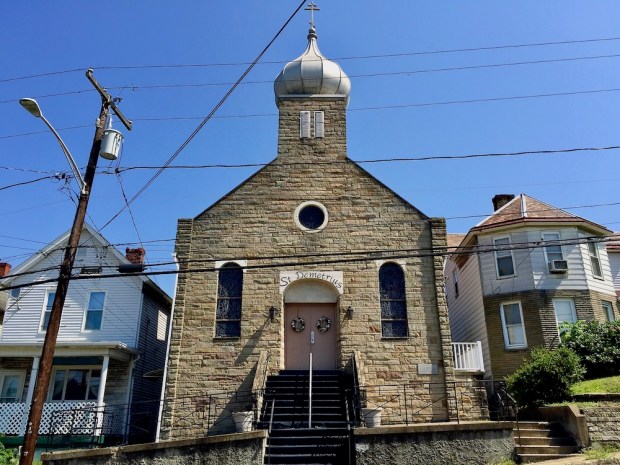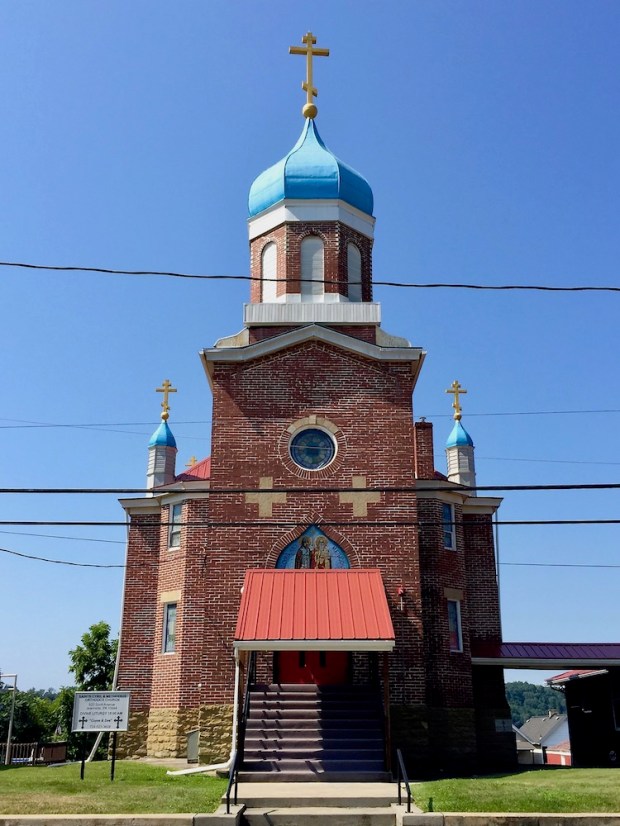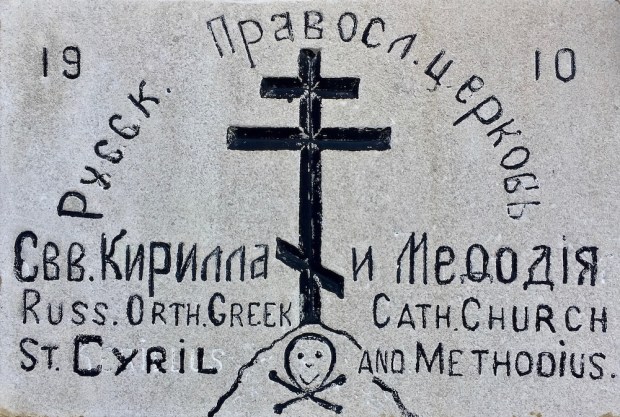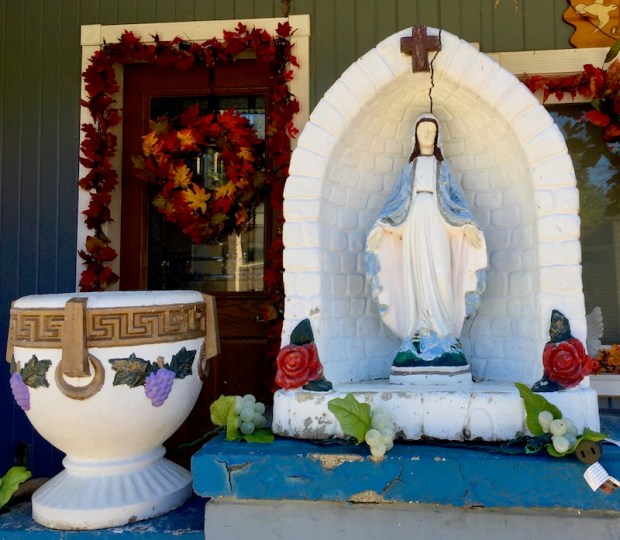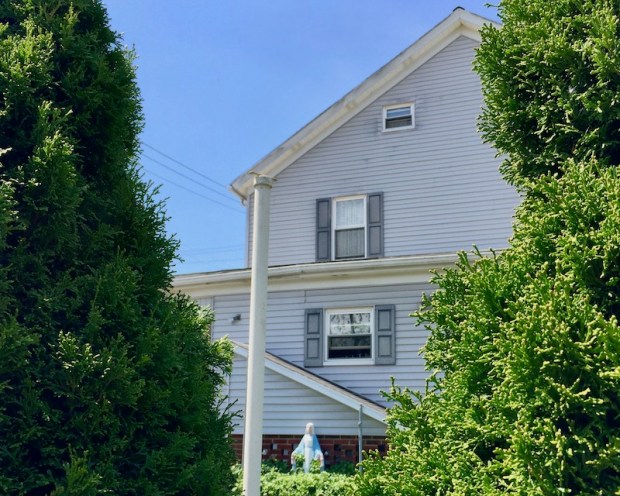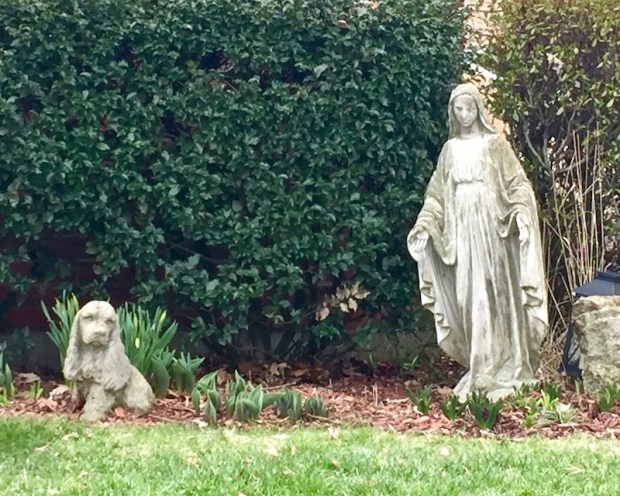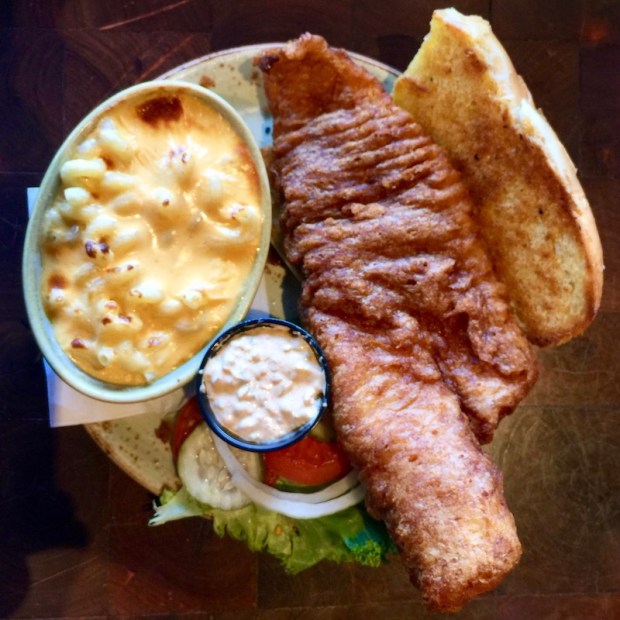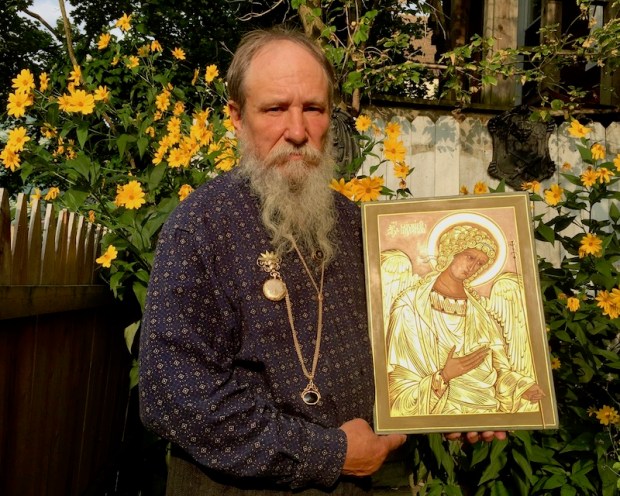
“An icon is a prayer in color. It is a window to paradise that shows you how to be transfigured.” Simeon Larivonovoff with icon of “golden hair” Archangel Michael
Waaaay longer than most of us can conceive of. Longer than the United States of America has existed; earlier than the Europeans landing at Jamestown and Plymouth Rock; a hundred years before Columbus was born–let alone sailed the ocean blue.
Six hundred and fifty-nine years. That’s how long the continuous line of Russian icon painters goes back. For seven centuries, the ancient devotional practice of creating highly-formal prayer paintings has been passed from father to son [yes: they have all been men]. That uninterrupted legacy may come to an end here, in Pittsburgh, with Simeon Larivonovoff.
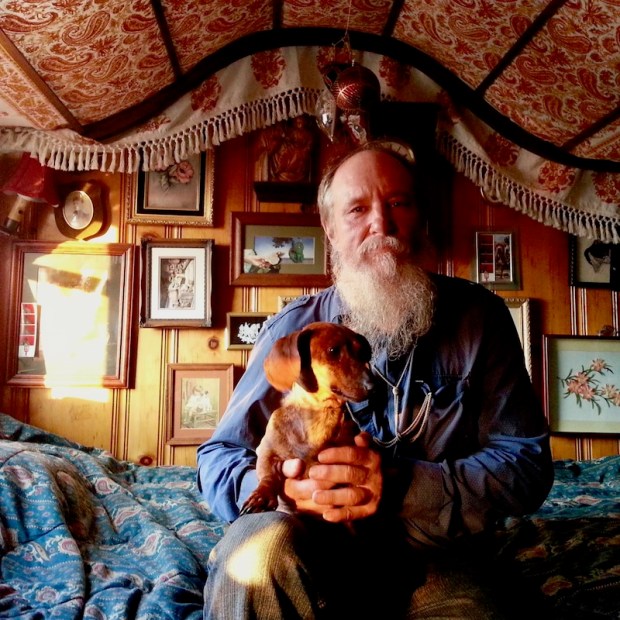
“You don’t mix cabbage with peas.” Simeon with one of his “doggies” in his bedroom/workroom.
A blast of sensations–I’ll warn you they’re not all pleasant–will arrive early and often. Visiting Simeon’s modest Polish Hill home begins with the raucous barking of his six dogs which completely nullifies any need for a doorbell. Simeon refers to these pooches with the diminutive “my doggies” or “my puppies,” even though they’re all full grown–several in a very big way. At least one member of the pack will be a constant companion–on the lap, by his side in the garden, or taken out on a leash sporting a jaunty kerchief as companion on Simeon’s frequent walks over the Bloomfield Bridge to the Shur-Save, or up Liberty Avenue.
The musky smell of animal fur–there are also a pair of house cats–mixes with the splinters of unfinished wood floors, stiff knotted area rugs, furniture polish, and antique brass. But it is the evocative omnipresent flicker of lamp light refracted through glowing cut glass and its partner aroma of smoking paraffin oil that will color your memory hours, days–weeks even–after departing. It may also be the best analog for Simeon’s world.
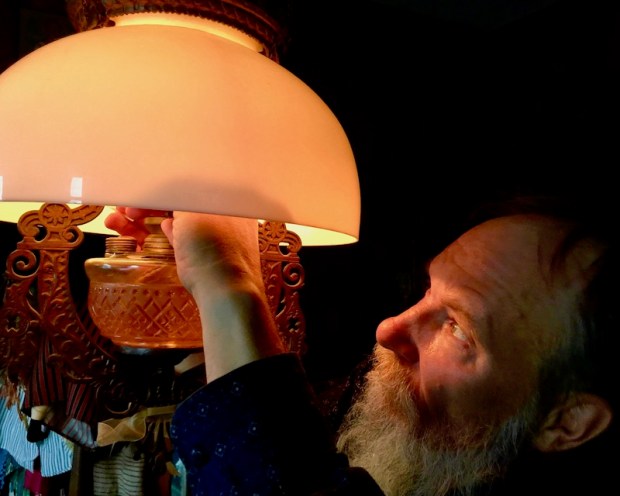
“Electric light is not needed,” Simeon lighting one of the dozens of oil lamps that light his home
The well-meaning speculative journalist faces a challenge photographing inside Simeon’s home. “Electric light is not needed,” he says while igniting the wick of an ornate, retractable, ceiling-mounted oil lamp–one of dozens of different models throughout the house–“these [lamps] are not in today’s society.”
Simeon is a member of the Russian Orthodox “Old Believers”–a sect of Greek Orthodoxy that preserves church practices going back to the 1600s, along with many of the lifestyle habits that go with it. “We pray in a pure 17th century style, before reform. We are non-conformists,” Simeon says. He further describes the group as “The Amish of Russian Orthodox.” The analogy–right down to the long beards and rejection of (most) modern technology–is pretty apt. On life in the 21st century: “I deal with the world, but I’m not influenced by it.”
That said, Old Believer practices also seem to overlap with that other locally-familiar brand of strict orthodoxy, Judaism. There is a weekly day-long, sundown-to-sundown sabbath in which no work may be done. “To cook a meal, to sew a button…no. A lot of people won’t answer the door on Sunday,” Simeon says of his fellow Old Believers. There is also a Kosher-like diet that forbids many of the same food sources: shellfish, eel, and octopus, pork and blood sausage.

“We don’t look at icons–they’re looking at us.” St. Praskevia icon (in process)
A visit with Simeon falls somewhere between Sunday school and Psychedelic Shack; as much Waiting for the Sun as waiting for The Son. “An icon is a prayer in color. It is a window to paradise that shows you how to be transfigured,” Simeon says of the goal of his artwork. “You ask the saint to help–you are not an artist, you are the medium.”
Simeon began painting icons at the age of nine, born into the family practice. “My father: you were his student,” Simeon says, “You had to learn a lot–prayers, colors.”

“Our Lady of Kazan”, Kazanskya icon (in process)
There certainly was–and is–a lot to learn. There was the practice of grinding his own paint pigments from natural sources [the tan color in the photographed icons comes from sycamore bark] and learning to read and write in church Slavonic (aka old church Bulgarian) with its 63-character alphabet. Icon painters must have “a library of icons in their head–the mind, heart, and hand are on the same level.”
Iconography follows a strict canonical representation of each saint. “You don’t dare deviate from the form,” says Simeon, “theology does not change.” Small details and colors may be chosen by the individual painter, but, according to Simeon, the main outline of an icon may never be altered between versions, renditions, and artists. Finished icons are never framed because “You cannot put God in a box.”
Certain details are crucial: the relation between forms or seemingly small elements–the number of curls in a beard or an eyebrow raised, finger positions or the clutch of a scroll. “How you portray hands on icons is very important,” says Simeon, “The hand of Daniel is very big to show you the prophesy.”
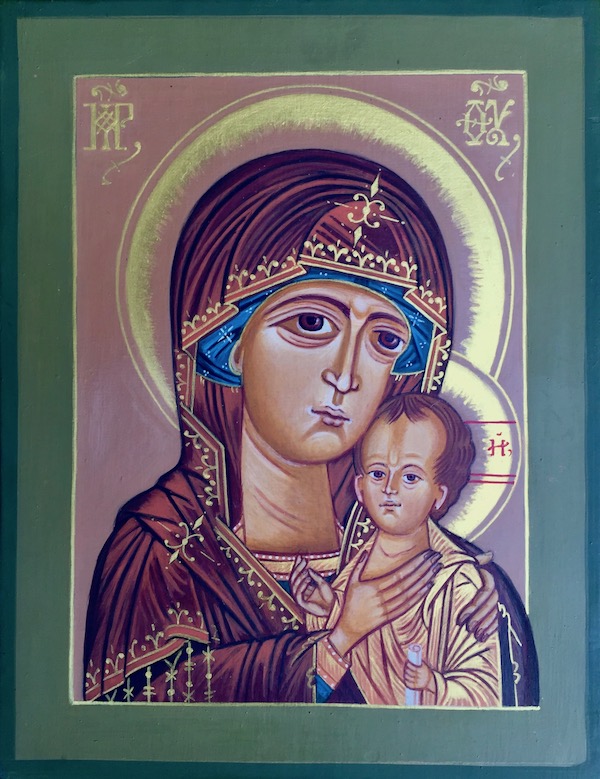
“An attainable salvation.” Icon of St. Petrovskya
Simeon’s knowledge of Russian church history and the world of iconography runs very very deep. So deep it’s no small challenge for the interviewer to keep up with the artist’s barrage of names, dates, liturgy, and riddle-like koans that densely fill each conversation like the icons that decorate his walls.
In our multiple meetings, I took a bunch of notes from Simeon’s monologues on subjects like St. Sergius Radonezh, sabbath practices, and The Schism. But with bon mots falling like beeswax drips from a prayer candle–“Falling in the mud is one thing, being of the mud is something else” or “An icon is a pilgrimage from one holy place to another…between heaven and earth to see glimpses of paradise” or “We don’t look at icons–they’re looking at us”–well, you should probably go to the history books when you’re really ready to dig in.

“The wall of icons are witnesses interceding to God for you.” Simeon’s bedroom/workspace.
Simeon’s own history gets a little murkier. When and why he emigrated to America was dismissed with a wave of the hand, “You don’t mix cabbage with peas.” [I believe this was analogy about religious persecution.] The dates and ages that get thrown around freely are a little squishy, too. That 659 years we mentioned above was a mere 647 years in a previous meeting. The very precise histories of antique oil lamps and furniture? Well, they’re all plausible. An ancient Russian prayer book of psalms or “chants” may or may not be in demand from The Smithsonian.
Regardless, Simeon is absolutely devoted to his craft. “This is the sole reason for my existence–to paint icons,” he says. And paint he has. Simeon estimates he’s painted between three and four thousand icons in his lifetime for an audience both within his local communities and around the world–some devotional, others are private collectors. Now he’s down to creating around 50 a year with eight or ten in process during our meetings. “I’m getting old,” Simeon says.
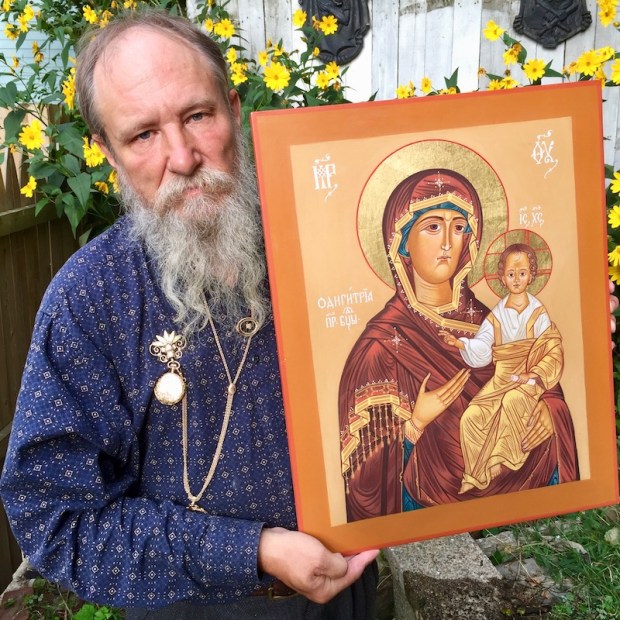
“You ask the saint to help–you are not an artist, you are the medium.” Simeon with icon of St. Hodogitria, “She who takes you by the hand, she who shows you the way.”
As strict a regimen as Old Rite Russian Orthodoxy seems to this outsider–its denial of compact fluorescents, crab cakes, and rock-n-roll seems like a heavy price for salvation–that’s not the way Simeon sees it. “We are a joyful religion…sunset is a new day beginning,” he says.
It’s a lovely way to look at the world–the early extinguishing of light in these darkest December days as not the trigger for seasonal affective disorder, but rather the beginning of a new possibility. That we are of the mud, transfigured, and on our tip-toes, trying to get one of those glimpses of paradise. Just don’t mix your cabbage with peas.
Bonus material! Back in 2011, local filmmaker Julie Sokolow made a short film of Simeon where you can see the man in motion. The lamp-lighting, dogs, and challenges of shooting in a home without electric light are all there.
